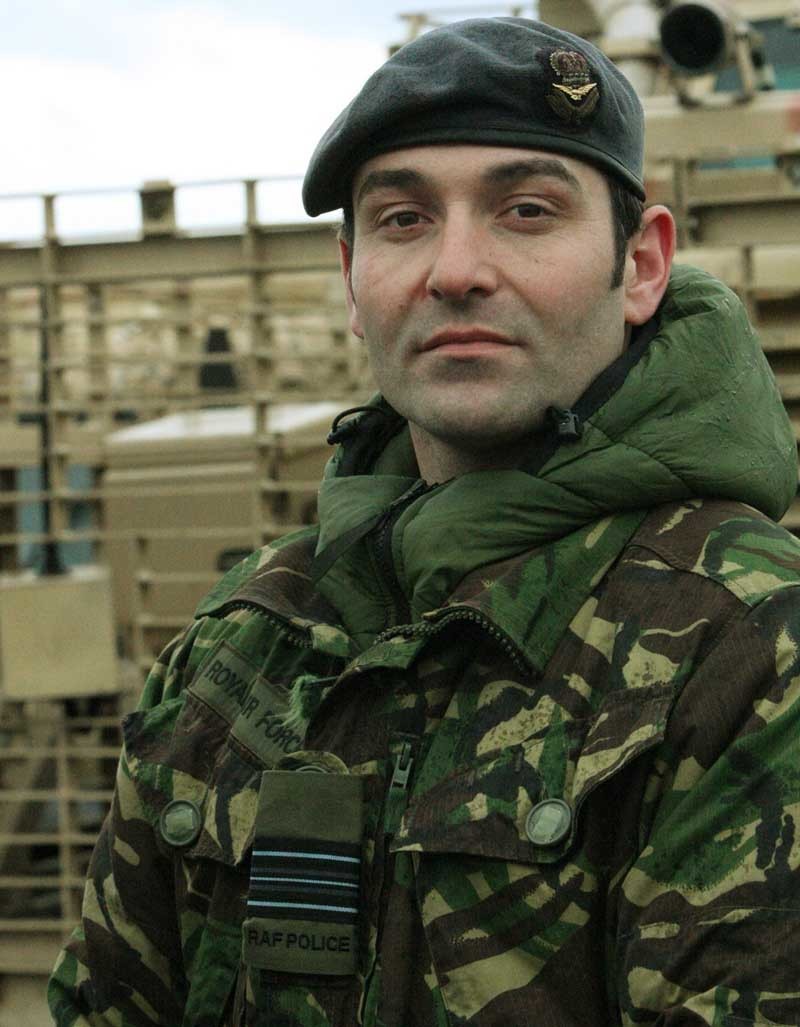From seasoned snipers with 16 years’ service to 17-year-olds with confidence beyond their years, the men and women of RAF Leuchars are ready for Afghanistan.
The problem of training for blistering 40C heat in a rainy and windswept Angus field was not lost on the members Number 6 Force Protection (6FP) Wing’s 58 Squadron, as they went about their drills at Barry Buddon near Monifieth.
In spring a deployment of around 200 troops from the unit will be flown out to Camp Bastion in Helmand province.
Their role will be to work alongside the US Marine Corps to co-ordinate and deliver its defence from indirect fire and ground attack.
Personnel at the Fife unit have trained for over six months for the mission, which will also see them engage with the Afghan people.
It was with military precision that journalists were ushered around the coastal training facility on Wednesday, with all questions about the future of RAF Leuchars off-limits.
Four snipers provided the first demonstration of the day, showing off a “pair and fire” withdrawal technique using live rounds from standard SA-80 AZ assault rifles.
A smoke grenade was hurled from cover under a grassy mound while two pairs of men began retreating in turn, one pinning down the “enemy” while the others scurried into a deeper position.
Dressed in khaki, with reeds and grass attached to helmet and uniform, the men were difficult to spot until they sprung into action.
Squadron Leader David Stellitano said the snipers would act as the most advanced members of the unit and could potentially be at the front end of an operation for three to seven days at a time.
He added, “They are very much my eyes and ears and are one of our main assets.”Importance of trustA sniper only receives a small operational bonus for being in the firing line and a recruit must spend 10 weeks training at RAF Honington in Suffolk.
Family man Corporal Robert Cone has served as a sniper in the regiment for 16 years and although this will be his first tour in Afghanistan he has toured in Kuwait, Bosnia and Pakistan.
He said, “The sniper training wasn’t as tough as the basic training because with that one minute you think you know where you are at, and the next you find out you are all over the place.
“You need to trust the guys around you and know that they are keeping an eye on you and you on them.”
Cpl Cone added that while he will miss his four children, the youngest of whom is three, communication has improved greatly since he joined up.
Regular phone calls and internet access is provided, including an E-Bluey system, which takes the text included in an email from family and prints it out to mimic a handwritten letter.
The second phase of the morning’s training was led by Flying Officer Stu Clark, who guided eight men carrying packs loaded with over 50 lbs of equipment such as a radio, ammunition, food and water.
Moving in a “herringbone” or “file” formation, the group made their way down a winding path to encounter two men dressed in robes and turbans like Afghan elders.
While two of the unit were led into a tent for discussions with the ‘locals’, the others took up positions around the area to ensure all lines of sight were covered.
Flying Officer Clark, from Kilmarnock, said, “If you get the consent of the locals and build up a relationship with them it makes things much easier because they are not going to give you any hassle.”
Squadron Leader Adam Davis said the months of training in the build-up to deployment is backed up by the rigorous basic training received by all recruits.
He said, “It is a mixed group with varying levels of experience and for some of them it will be their first time going into such a situation.
“But we are confident in the training provided.”Routine ‘takes over’For 17-year-old Aircraftman Matt Smith from Wigan who will be 18 by the time he flies out it will be a first experience in a combat zone and he is keen to follow in the footsteps of his father, who served with the RAF for over 15 years.
He said, “It has taken a lot of training but I am looking forward to getting out there.
“I always wanted to do something that was physically challenging and do something positive with my life.”
Lance Corporal Adam Goodwin, from Manchester, has already been to Afghanistan three times at the age of just 23, but is keen to get back out.
He said, “The sun tan is probably the high point, but the low point is that you don’t get much sleep until you get back to camp.
“The first couple of days are difficult until you get used to it and I was pretty nervous the first time I went out because I was young at the time.”
He added, “After a couple of weeks you get into a routine and that takes over.”
Air Officer Scotland and RAF Leuchars Station Commander, Air Commodore Harry Atkinson, said, “Air power provides a crucial advantage over the Taliban and these RAF regiment gunners from RAF Leuchars will play a key role in ensuring that air operations continue.”
